In the winter of 2002 I was thirteen years old. The world seemed like a dire place in the wake of 9/11, no one was flying and terrorism panic reached far and wide. I asked my dad if we could drive across the country that summer, and amazingly he agreed, eventually. What started as a whim turned into a two-month, 11,000-mile road trip across America and back.
In the fall of 2020 I was thirty-one years old. The world seemed like a dire place amid an ongoing pandemic. No one was flying and virus panic reached far and wide. I asked my fiancée if she would drive across the country with me, and amazingly she agreed, eventually. What started as another whim turned into a one-month, 7,000-mile road trip across America and back last November.
When we set out to plan this latest voyage, the nostalgia for that 2002 trip with my dad was inescapable. We did so much, took the long way, opening ourselves up to the grand experience of this country in ways that seem pretty distant right now. And there was another weirdly significant parallel: Back then my dad hauled us around in the family’s 1994 Volvo 850 wagon, and this time, I had a 2020 Volvo V90 Cross Country for the trek.
But driving a Volvo and criss-crossing a continent is where the similarities begin and end.
Editor’s note: This story is part three of three chronicling a cross-country road trip undertaken in mid-November of last year (Read Part 1 here and Part 2 here.) Volvo provided the vehicle, but that was the extent of the automaker’s involvement. Jonathan and and his fiancée Caitlin both tested negative for the coronavirus multiple times before, during and after the drive and followed local health regulations throughout. Today, the picture with vaccine distribution seems to be improving at last. But we hope their experience illustrates the strange state of the great American road trip at this singular moment in time. — Kyle Cheromcha, The Drive EIC


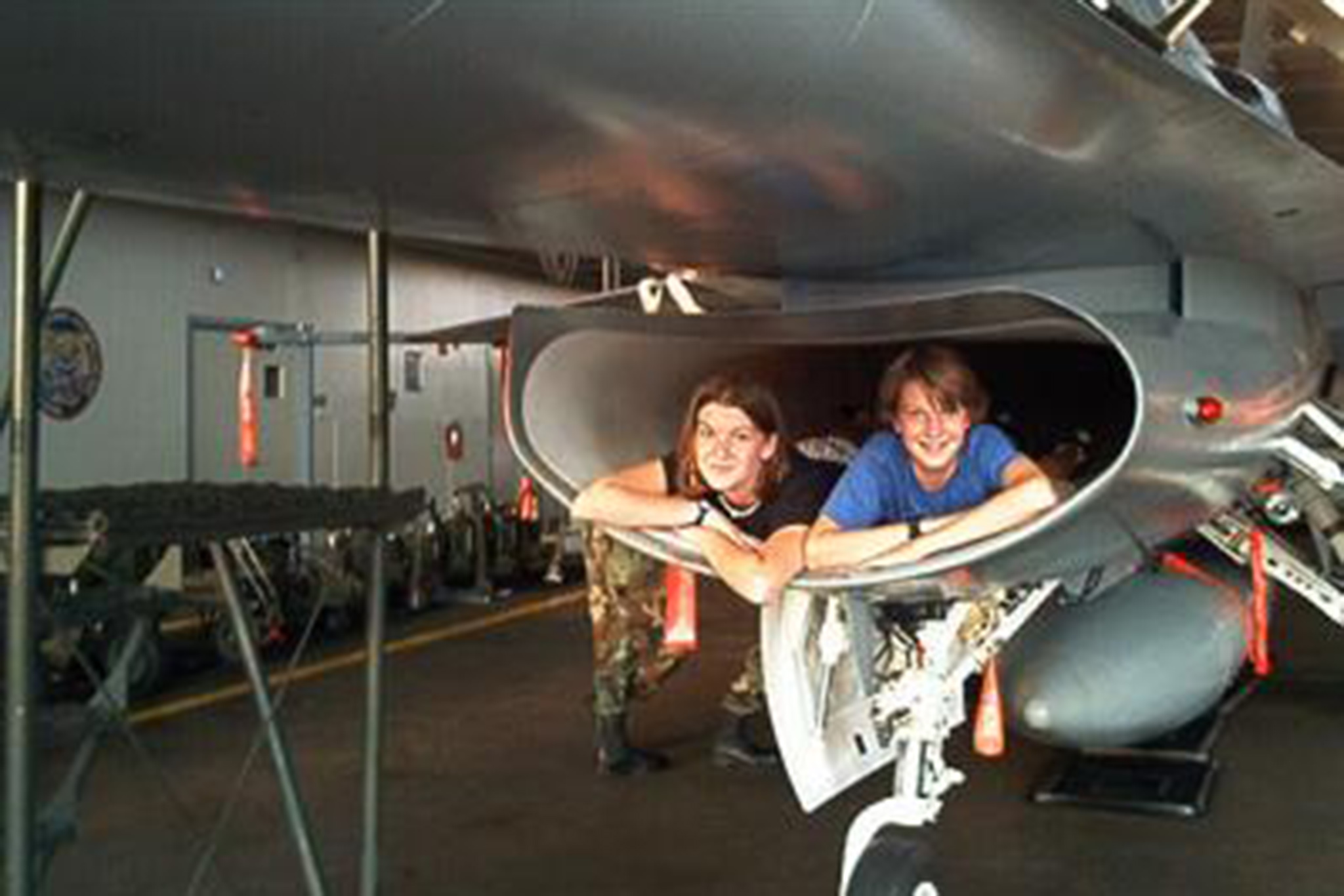

When I published the first installment in this series last month, I got no small amount of comments that questioned whether I was overreacting to the realistic risks of a pandemic road trip with my ultra-cautious approach. I don’t regret the precautions we took at all, but it is legitimate to ask whether there’s much richness to be gained from a trip across America when it’s reduced to long interstate hauls and cheap hotel rooms, and little else.
Back in 2002, the name of the game was to see as much of the country as possible while also staying in as few motels as possible. This meant my dad dug deep into his vast collection of rolodex entries from all his past travels to find guest rooms and couches for us to crash on most of the way across the country. In December, that just wasn’t feasible.
The trip back from New York to Los Angeles would be a different vibe than the journey out, not least because we weren’t chasing the thought of seeing family after a long time away. Instead, we were just trying to get home—but America still has a way of making itself seen from the road, even when you’re dashing through it without pause, even when you’re the one stuck behind the wheel instead of your dad.
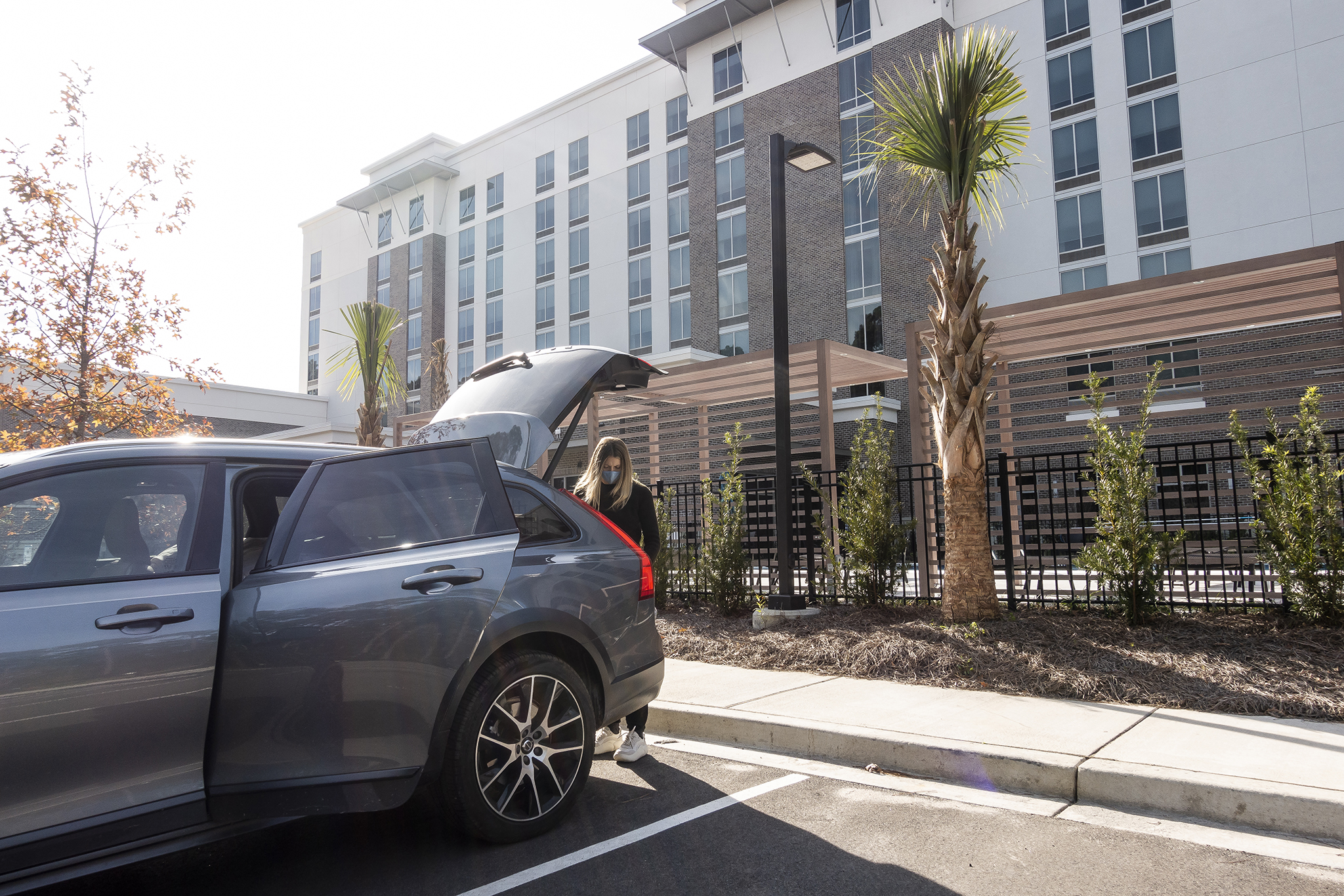



The Sort of Long Way Back
Having already driven across the country and spent weeks podded up in the Hudson Valley, it was especially hard to extract ourselves from the soft familiarity of that situation and hit the road again. I had scheduled a stop in South Carolina for a Volvo factory tour, but otherwise were planning to drive all day every day during daylight until we reached Los Angeles. That amounted to six to eight hours a day as the winter solstice approached and sunset came earlier and earlier.
On our way from New York to South Carolina, I couldn’t help but marvel at the amount of driving my dad clocked all by himself on our 2002 trip. In 2002, it was FM radio and cassette tapes. In 2020 we had CarPlay, a Bowers & Wilkins speaker system, and literally thousands of hours of podcasts and audiobooks available at any moment. And still, even doing it with two people splitting the pilot duties is a mental strain.

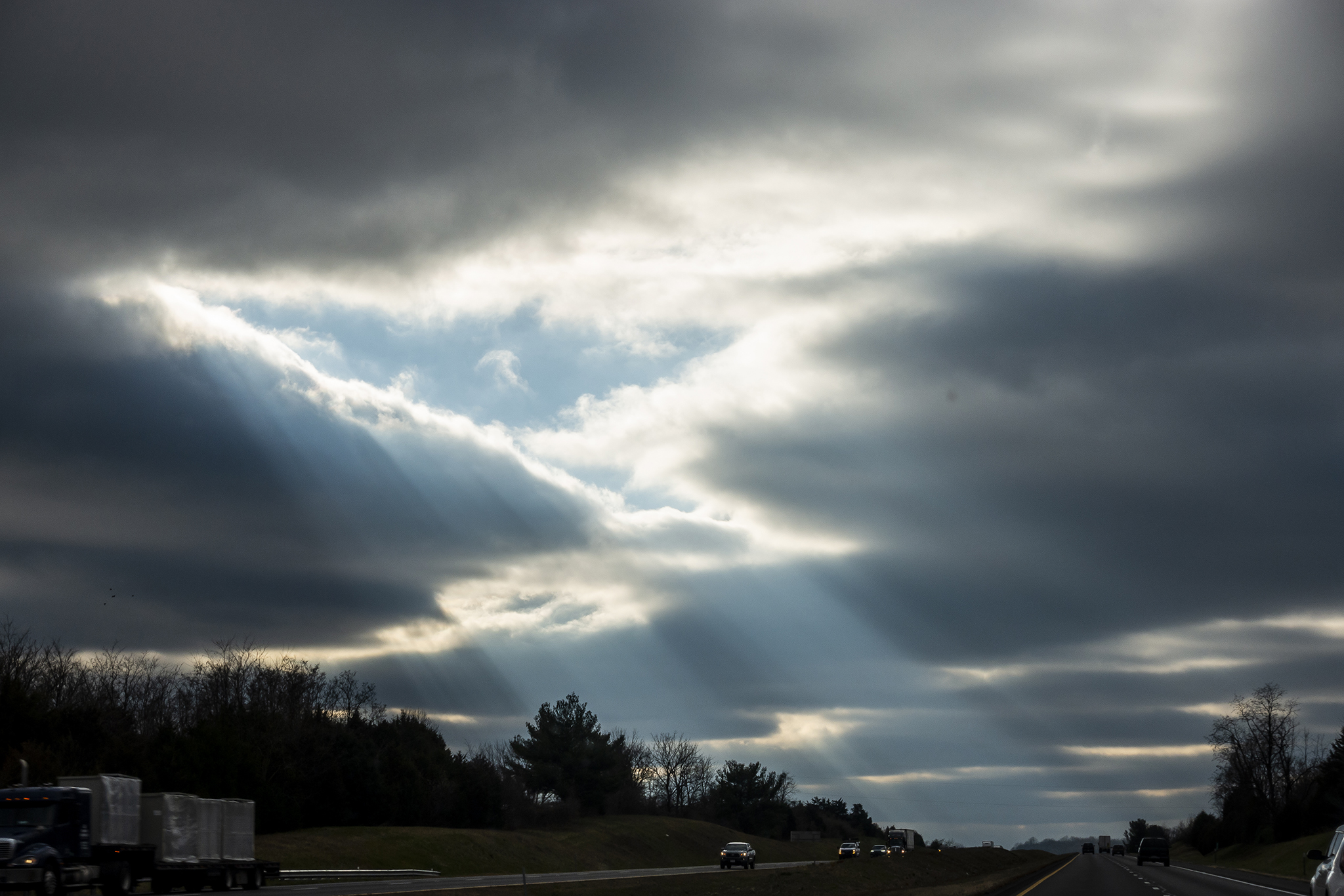
Cait and I were working in two-to-three-hour stints throughout the day, which I kept reminding myself was child’s play when my pops was knocking out 400-plus mile days as the solo driver all those years ago. Apart from when, of course, he let me take the wheel in Manville, Wyoming.
Before the trip, knowing that his son was car-obsessed, my dad told me I could drive the 850 wagon in any state where I could legally own a gun or get married—this at age 13, remember. I don’t know if I could lawfully do either of those in Manville, but all I cared about was getting behind the wheel and actually driving a car for the first time. What can I say? It was bliss, and I will always fondly remember how in that moment, that little corner of Wyoming felt like a true frontier.
Back in the present, Cait and I arrived in South Carolina early enough to watch the sunset from our hotel room. I let her sleep in the next morning while I made the short trip to Ridgeville, SC, where Volvo’s factory complex occupies a vast area surrounded with tall pine trees. I had to sign a health waiver before entering the complex, assuring I wasn’t experiencing any coronavirus symptoms and was not awaiting test results. I was confident with two recent PCR negative results.









Once properly badged and PPE’d up, I was herded into a golf cart and my tour began. It felt like a happy mixture of Willy Wonka in the way we breezed through these indoor fields of robot arms working away, and IKEA in the pure Scandinavian efficiency of it all. This factory builds every Volvo S60 sold in the world aside from the Chinese market, which has its own factory for tariff reasons. Equally impressive is the fact that more than 30 percent of the materials that go into the US-built S60 are sourced from within South Carolina.
Factory tour complete, I was deposited back at the main gate and hopped back in my Swedish-built V90 to go collect Cait for, of course, another long day of driving. Our goal that night was a suburb of Atlanta called Lithia Springs, where we had identified an acceptable hotel. My route for the return trip had us primarily sticking to historic Route 66, aka Interstate 40, once we turned west from South Carolina. Beyond avoiding crowded downtowns and finding hotels that advertised extra cleaning protocols, we didn’t have any real plan—though you don’t really need one when you’ve got a whole country unfurling before you.

Cross Country in a Volvo, Then and Now
In 2002, my priorities were much simpler. I just wanted to buy as many fireworks as possible. My dad, writing about our trip back then, had a couple lines about how if Volvos in World War II had been stocked with as much firepower, we would all be speaking Swedish now.
Spending an entire summer in the car with my dad had a few major effects on 12-year-old me. I heard so many corny jokes that I still repeat, like the one above. I saw some of the most beautiful places in America, along with some of the saddest. In real time, I saw the lasting benefits of maintaining a wide personal network of friends, family and former colleagues in the way my dad always seemed to know someone nearby who was glad to put us up. I came home that summer with a new respect for the vastness of this country, and the vastness of his rolodex.


In pandemic times we replaced all the fireworks with hand sanitizer and antibacterial wipes. Sad trombone. Tourism on the last legs of the run home was restricted to whatever we could see from the Interstate as we blasted by—thank you, 70 and 75 mph speed limits in the Sun Belt. Outside Memphis, a large black glass pyramid turned out to be the flashiest bait shop you’ve ever seen. In Arkansas we saw a truck with “Shoot A Democrat Today” scrawled into the grime on the rear.
The southern edge of the Ozarks in Oklahoma proved one of the most scenic sections, unfortunately mostly obscured by the first serious rain we had experienced in over three weeks on the road. The rain poured down, forcing us well below the speed limit. I found the switch for front and rear fog lights, again taking a moment to appreciate the ease and immense comfort the V90 Cross Country afforded us. Especially in bad conditions.
The land flattened out once again as we crossed Texas, and the skies were extra dramatic as we saw rain falling from huge, billowy clouds in the distance with sun behind. The temperature dropped and it was at this moment we were glad to have chosen a southern route, avoiding inevitable snowfall and road closures if we had come back through the high mountain passes of the Rockies.






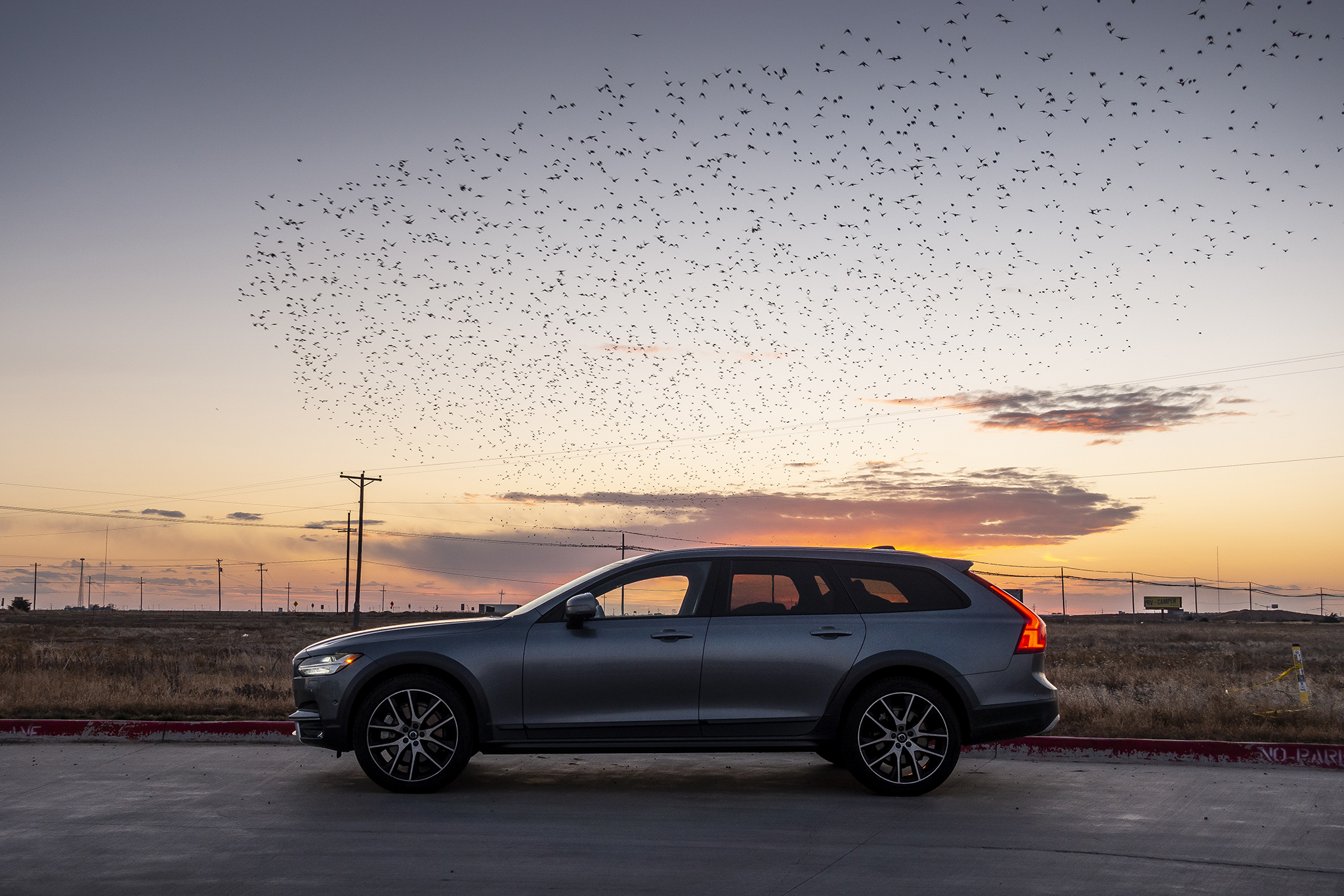
Cait played DJ on the immersive sound system with a perfect mix of classic rock and chill electronic music. A pink and purple sunset just outside Amarillo, Texas was an unexpected treat after another long day on the road.
At age 13 in 2002 I distinctly remember not wanting to go home as our trip wound down. Home meant school was starting again. It meant I had to stick to a routine and do all those things that go along with summer ending as an adolescent. As Cait and I made our way west on our second to last day on the road I had a very different feeling. My energy was buoyed by the idea of being back in our apartment soon and being able to unpack after an entire month on the road.
As we neared Flagstaff, Arizona, it started to snow, hard. Bright and sunny skies all day had morphed into dark swirling clouds depositing alarming amounts of snow to the road surface very quickly. We had eight miles to our hotel and safe travel speeds had halved as the snow stuck on the road and grip decreased with each mile. In my head I was playing back scenes of 50-car pile-ups I’d seen where people just keep driving highway speeds in whiteout conditions. I was determined not to end up in a similar situation.






I eased off the highway and after parking at our hotel, stepped out onto a solid sheet of ice. The Volvo’s AWD system never lost its footing, even if I may have once or twice in my tennis shoes. It’s almost always good to be on the road, but sometimes it’s also very good to be off the road. Over the next few hours we heard a steady stream of sirens traveling up and down I-40. The next morning the Arizona DOT Twitter account confirmed that there had been several big-rig wrecks overnight on either side of Flagstaff.
Our last day of driving was a blur of desert and distant mountains. Ice still covered patches of the interstate as we left Flagstaff behind. As the sun rose further and we dropped down into the desert, speeds and temperatures climbed in concert. I was able to shave a big chunk of time off our ETA just by keeping up with the traffic around us. The V90’s four-cylinder packed a decent punch for such a small displacement engine, especially in highway passing situations.
Changing from I-40 to I-15 was a distinct vibe shift. The urgency was palpable as a couple other cars passed us like we were standing still while already traveling 80 mph. Cait joked that I had planned somehow to give her the wheel during the most frantic driving sections, this being one of them. She retracted her statement when I offered to drive us the last leg home through the heart of Los Angeles. The big 13.6 inch brakes endured one last workout as our fully loaded wagon descended into LA’s infamous smog layer.






Once past the San Gabriel Mountains and barreling through San Bernardino, we had one last lunch stop for burgers at In-N-Out. The line was worth the wait despite being only an hour from home. Not long after, we pulled up at our apartment, having covered just over 7,000 miles. I was extremely glad to be home, but also, just a touch melancholic about it really being the end of the road.
These Strange Times
To clock so many miles safely and relatively easily feels impressive. But remembering how much flavor America had to offer from the 2002 trip with my dad, I can’t push off the feeling that we missed out on a lot of that during this 2020 trip—Amish restaurants, swimming holes, military-base parties, so much more. Out of pandemic caution, Caitlin and I didn’t seek out those down-home greasy spoon diners that my dad and I lived off. We didn’t swerve off the road for the giant balls of string or trapper museums or tiny towns with funny names. Nothing was open except hotels and drive-through.
It’s true, we missed a lot on the road. We made compromises that only make sense in the lens of the COVID-19 pandemic. In 2002 my dad and I had taken the longer scenic routes, often just to see what was around the next bend or over the next hill. In 2020 my fiancée and I traded precious time with our families in New York for those on-a-whim scenic route offshoots.
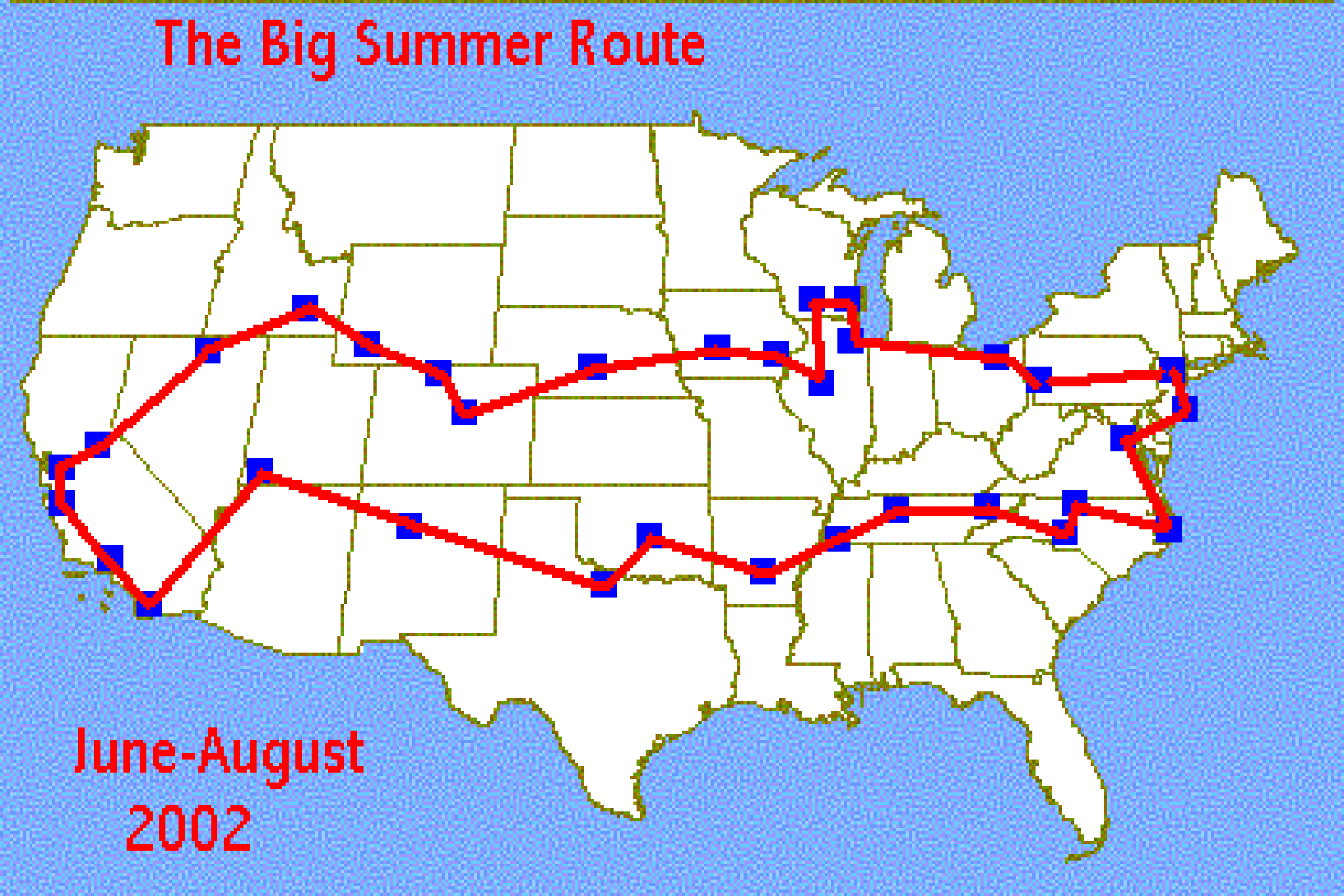

Despite all that, I have no regrets about the way we carried out this trip. I added a chapter to a fondly remembered part of my family history. I was able to share the adventure of seeing America by road (albeit mostly interstate) with my fiancée. Meanwhile, using the V90 Cross Country as our mobile home base could not have been more perfect. The fact that we didn’t have any true disaster stories from this month on the road is a testament to Volvo engineering, and Cait’s patience.
Being able to connect the dots even partially by driving this Volvo wagon across America and back was a blessing; at some point, I’m not sure when, but at some point on the way home it dawned on me that when I look back on 2020, this trip will be what I remember first. Sure, the pandemic is there beneath it all, just like my 2002 experience had this weird indelible link to the aftermath of 9/11. But it’s these weeks on the road that’ll be lodged in my mind, not the endless, dumbing months of staring at the same four walls and wondering when life will get back to normal.
We may have chosen a bad time for a trip like this. But then we ask ourselves, what would we be doing instead? The answer was always the same: “Just sitting in our apartment.” Which is what we’re doing now, though I’m already eyeing the door and planning our next trip. But this time we’re going to stop for the giant balls of string and the towns with funny names. Maybe we’ll even make it back to Manville, just for old times’ sake.
Got a tip? Send us a note: tips@thedrive.com
